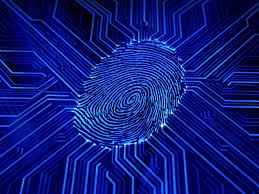
Mclub World – Biometric technology for digital identity now plays a critical role in modern security systems. Many services use fingerprints, facial recognition, or iris scans to verify users quickly and accurately. This technology replaces traditional passwords and ID cards, which are often forgotten or stolen. Governments, banks, and tech companies increasingly adopt biometrics for safer authentication. Users enjoy faster access to apps, buildings, and online accounts while keeping their data secure.
“Read More: Top 10 Biggest UFC Sports Stadium in the World with the largest Audience Capacity”
Fingerprints remain the most widely used biometric technology method. Many smartphones already let users unlock screens with a touch of a finger. Banks also equip ATMs and apps with fingerprint scanners for secure transactions. Businesses use fingerprint access to restrict entry to sensitive rooms or offices. This eliminates the need to remember complex passwords or carry physical keys. Users find it convenient and reliable because each fingerprint is unique.
Airports around the world now rely on facial recognition to process passengers faster. Cameras capture travelers’ faces at check-in and compare them to passport photos instantly. This reduces long lines at immigration and boarding gates. Airlines also use biometrics for bag drop and boarding passes. Passengers appreciate the speed and convenience while authorities maintain tight security. Facial recognition minimizes human error in verifying traveler identities.
“Read About: Best Halal Food Experiences for Muslim Travelers in Europe”
Banks and fintech companies use biometrics to protect customers against fraud. Fingerprint or voice recognition authenticates users before approving large transactions. Mobile banking apps now include face or fingerprint login to prevent account hijacking. Even credit card issuers experiment with biometric-enabled cards for added security. Customers trust services more when they know their identity is harder to fake. Fraud detection systems also benefit from real-time biometric checks.
The COVID-19 pandemic accelerated the need for contactless solutions. Face and iris recognition let people verify identity without touching surfaces. Offices, gyms, and hotels replaced keycards with facial scanners for entry. Even voting booths in some countries now rely on contactless biometrics. This reduces the spread of germs while keeping access secure. Businesses see it as a way to improve both hygiene and customer experience.
Governments use biometrics to build reliable national identity systems. Citizens register fingerprints or faces to access healthcare, benefits, and taxes online. In developing countries, biometric ID helps people prove their identity even without paper documents. Voter registration and fraud prevention during elections also benefit greatly. Officials save time and money by automating identity checks in various services. Citizens gain easier, faster access to government programs.
Some countries cooperate to create seamless travel experiences for frequent flyers. Programs like e-gates and trusted traveler lanes use biometrics for fast border crossing. Passengers enrolled in these programs skip manual passport checks entirely. The system matches their face or fingerprint against secure databases. Business travelers and tourists alike enjoy the efficiency. At the same time, border security agencies keep threats in check.
Many workplaces switch from punch cards to biometric attendance systems. Employees scan their fingerprint or face when arriving and leaving work. This prevents “buddy punching,” where one worker clocks in for another. Payroll accuracy improves because records come directly from verified data. Employees don’t have to carry badges that can get lost or damaged. Managers appreciate the transparency and reliability of the system.
Hospitals and clinics now use biometrics to secure patient records. Doctors log in to electronic health systems with a fingerprint or iris scan. Patients also identify themselves at check-in by face or fingerprint. This ensures only authorized personnel can access sensitive information. Data breaches become less likely because passwords alone aren’t enough. Patients feel more confident about the privacy of their medical history.
Biometric technology continues evolving with artificial intelligence. Future systems may combine voice, gait, and heartbeat recognition for higher accuracy. Developers experiment with wearable devices that continuously verify identity. Businesses prepare to integrate biometrics into virtual and augmented reality platforms. This opens doors for secure transactions and access in the metaverse. Staying ahead of trends ensures users enjoy cutting-edge security solutions.
This website uses cookies.